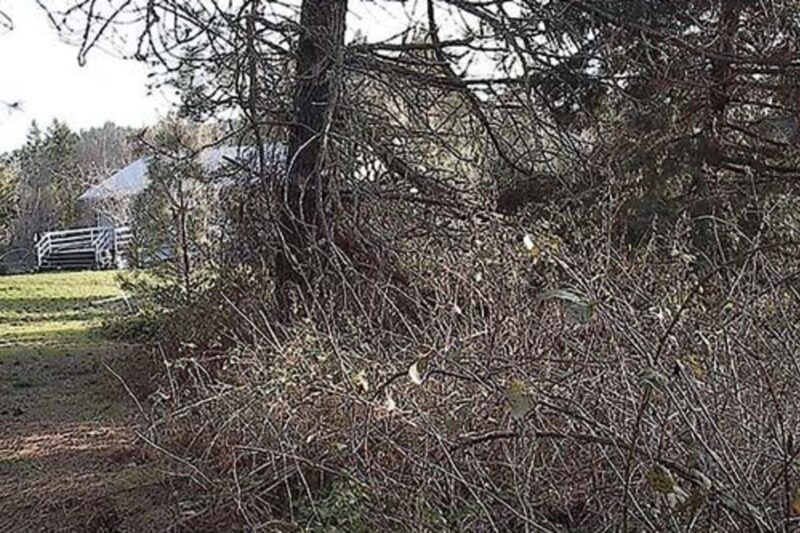Sean C. Morgan
Fire officials are spreading the message “Wildfire Knows No Season” in the run-up to fire season, urging people to remain vigilant against wildfire and to make their homes defensible against potential wildland fires.
May is Wildfire Awareness Month. Throughout the month, the Oregon Department of Forestry and Keep Oregon Green along with six other states will promote various safety tips and messages.
“This year could be another season of problems,” said Neil Miller, forest protection supervisor with the Oregon Department of Forestry Sweet Home Unit. Oregon has been lucky so far. The conditions that led to fires in January 2014 were present earlier this year with the mild winter.
Unlike last year, the weather stayed dry and mild, stepping up the probability of problems outside of fire season, which typically begins mid-June.
Now is the time to start cleaning up yard debris and preparing defensible space around homes, Miller said. Vegetation should be cut back from homes, trees limbed up and other potential fuels removed from the area around a home.
If the debris to be burned, burn piles must be attended, with water and a tool available, Miller said. Before burning, people should call the burn line to make sure whether it is a burn day, decided based on weather conditions and Department of Environmental Quality standards.
Burn piles seemed to be one of the biggest issues for fire officials last season, Miller said.
Miller warned that people also need to take proper care of recreational fires, campfires. When they put them out, they need to be drowned, stirred and drowned again. Before leaving, someone needs to put a hand on a doused campfire and make sure it’s cold.
He also warned that carelessness with fire could lead to fines and liability for suppression costs.
“If you’re not taking precautions, if you’re found liable, you’re going to be paying for the cost of suppression,” Miller said.
Last year, a few people were cited for burn piles and for burning prohibited materials – rubbers, plastics, insulation and roofing material, Miller said.
The outlook for the official 2015 fire season is for above normal temperatures and less than normal precipitation, Miller said.
Until the first of January, the weather was looking relatively normal, then the precipitation dropped off.
As a whole, the Willamette area is at 8 percent of its normal snowpack, Miller said.
Statewide, “once Mother Nature flips the switch to summer, we’ll see early season fires,” he said, and “we could see fires here in the Willamette.”
“Things are starting to green up now,” Miller said, but if this lack of moisture continues, fires will start earlier. On the other hand, the grass and brush doesn’t seem as thick this year as last year.
Lives, personal property and many values provided by Oregon’s forests and rangelands are at stake.
In 2014, 1.3 million acres in the Northwest were consumed by fire, including 868,000 in Oregon. The total cost to date exceeds $460 million.
On lands protected by the ODF, 705 human-caused fires burned around 20,000 acres, nearly six times the 10-year average; although locally, the Sweet Home Unit saw less than average. The ODF’s large-fire costs were $75.6 million, with timber losses totaling about $227 million. Fire destroyed numerous homes, threatened large communities and decimated key fish and wildlife habitats.
“Simple prevention strategies will make the strongest impact in keeping your home, family and community safe,” said Kristin Babbs, president of the Keep Oregon Green Association.
The true culprits are a wildfire’s hot embers, she said.
“They can travel through the air, a mile or more ahead of a wildfire, and come to rest in the leaf debris on the roof or in flammable plants in the landscaping where they eventually smolder and ignite. “You can’t control where these embers land, but you can control what happens when they do.
“In a large fire event, firefighters may not have the capacity or resources to defend every home. Just as you lock the doors to keep your home and family safe, think of creating a fuel-free defensible space around your home to reduce fire danger and provide safe access to firefighters so they can protect it.”
Throughout the month, Keep Oregon Green and the ODF will promote new wildfire prevention messages.
For more information, visit keeporegongreen.org, oregon.gov/odf and nwccweb.us. Follow on Twitter, @keeporegongree or @ORDeptForestry, and Facebook.
Before burning, call the burn line at (541) 451-1904.
How to protect yourself
CLEAN: The best place to start is with the house and the first 30 feet that extends from the outermost part of the house, including detached garages and sheds. The roof is the most vulnerable part of the home. Regularly clear leaves or needles from the roof and gutters, and cut back tree limbs that overhang the roof.
CLEAR: Remove any combustible natural or human debris, such as leaves, branches, and gas or paint cans that tend to collect near the home, under stairs, decks, and porches. Also important: Relocate firewood at least 30 feet from the home or store it in an enclosed shed.
LANDSCAPE: Landscaping should contain low-growing, fire-resistant plants that are spaced carefully so as not to lead a fire to the home. Rake leaves and debris from the yard, mow grass, prune trees six to 10 feet up from the ground, and keep plants well watered to prevent a surface fire from climbing into the crowns and carrying flames from trees to the house. Properly placed deciduous trees can actually protect a home by blocking a wildfire’s intense heat.
Fuel breaks, such as driveways, gravel walkways, and green lawns can stop the advance of a fire by starving it of flammable vegetation. In the zone 100 to 200 feet from the home, trees may need to be thinned, though less intensively than those closer in, so canopies are not touching.





